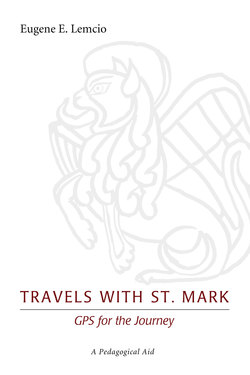Читать книгу Travels with St. Mark: GPS for the Journey - Eugene E. Lemcio - Страница 8
На сайте Литреса книга снята с продажи.
2. “Son of Man” in Daniel 7. Vision and Interpretation (Ancient and Modern)
Оглавление| Daniel 7: Vision | Explanation #1 | Explanation #2 | Explanation #3 |
| 3 Beasts (2-6) | |||
| 4th Beast | 4 Kings (17) | 4th Beast (19-20) | 4th Kingdom (23) |
| 10 horns | 10 Kings (24) | ||
| 11th horn | 11th horn | 11th King | |
| speaking great things (8) | |||
| speaking great words (11) | speaks words (25) | ||
| against Most High [MH] | |||
| made war with & | |||
| conquered SMH (21) | wore out SMH | ||
| tried changing times & law | |||
| temporarily victorious | |||
| Ancient of Days [AD] judges (9-10) | AD judges (22) | court judges (26) | |
| one like a son of man (13) | Saints Most High [SMH] (18) | SMH | People of SMH (27) |
| given | receive | possess | given |
| dominion | dominion | ||
| glory | |||
| kingship | kingdom | kingdom | kingdom |
| universal service | universal service | ||
| indestructible kingship | eternal kingdom |
1. Because Jesus exclusively employs “the son of man” as a self-designation, and because the expression is derived principally from Daniel 7, it is necessary to examine the dynamics of the original usage.
2. The overall political emphasis displayed earlier in map 1 lies behind its particular manifestation in this chapter, as the bold font highlights.
3. Although vv. 1–14 present the vision proper, explanations 2 and 3 also contain expansions (additional details of the original vision).
4. John J. Collins summarizes three main views about the identity of the son of man figure and the Saints/Holy Ones of the Most High: (a) a collective symbol for loyal Israel under assault, (b) a human representative of these people, and (c) an angel (Michael?) at the head of a band of angels—both being the heavenly patrons of God’s earthly people. See map 3 for a fuller treatment.
5. Although the MT enables one to read v. 27—and (c)—in this manner, the LXX prevents one from doing so for two reasons: angels are never referred to as “holy”; and v. 27 speaks of “the holy people of the Most High” rather than “the people of the Saints/Holy Ones of the Most High” (MT).
6. I have argued in TB that we will be distracted from the central point by focusing on the figure’s identity (one of the above). Rather, the stress should be on the nature of his human-like condition—regardless of who he is/represents: an embattled but loyal Israel, or its lowly human representative, or a vulnerable member of the angelic order (or one from the lower ranks). For the sake of argument, work with “son of man” as an idiom for humanity in its frailty and vulnerability—the downside of human experience. See Bowker, Burkett, and Lemcio.
7. And one needs to give close attention to the dynamic aspects of the mini-drama (narrative in nuce) taking place (rather than focusing on the denoument): a kingdom was granted to one who had previously had none; glory was given to him who had been without it; authority was bestowed upon a “personage” who had lacked it.
8. This phenomenon belongs to the widespread biblical theme of reversal: God raises the lowly and brings down the high and mighty. (See for example, the Song of Hannah in 1 Sam 2:1–10 and the Song of Mary in Luke 1:51–53.) Daniel and the Synoptic Gospels (and Revelation, for that matter) underscore the primarily political nature of that reversal, as the frequent terminology abundantly illustrates. At issue is, who rules (really) and how?
